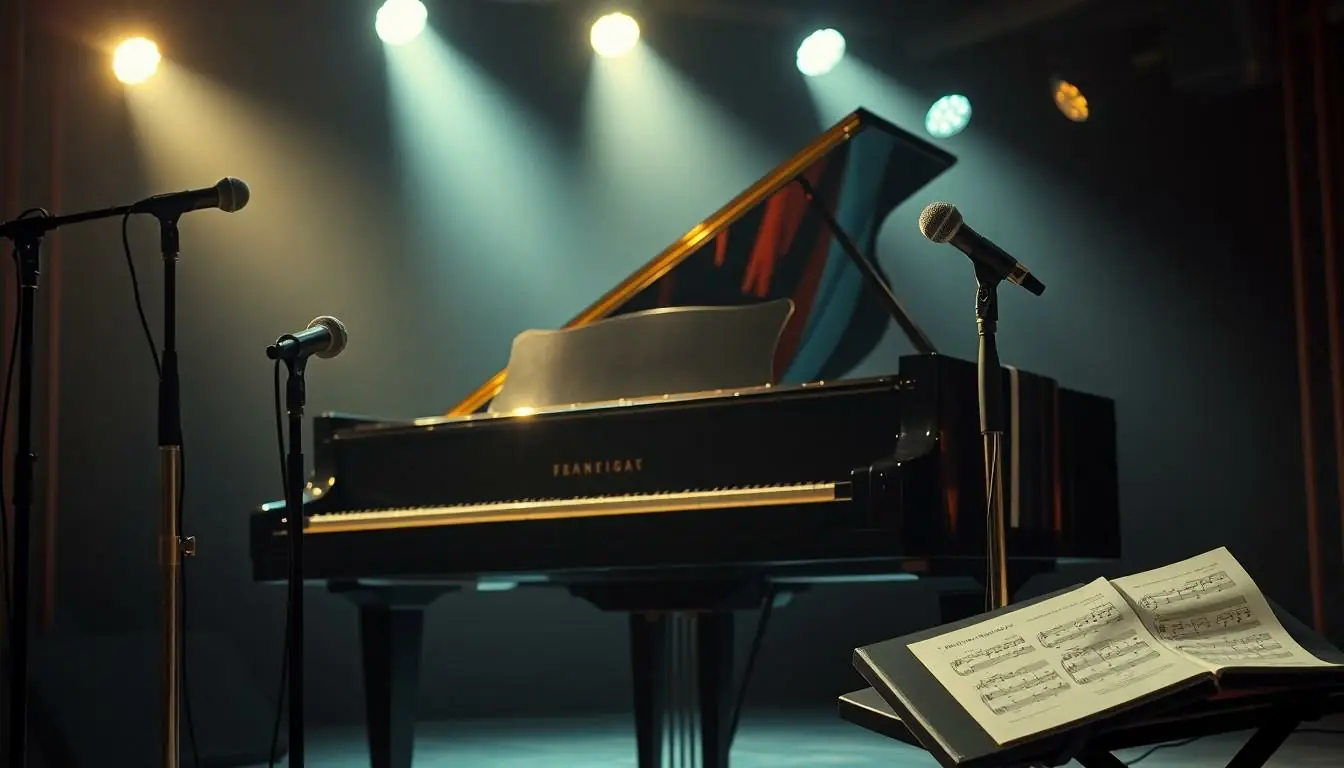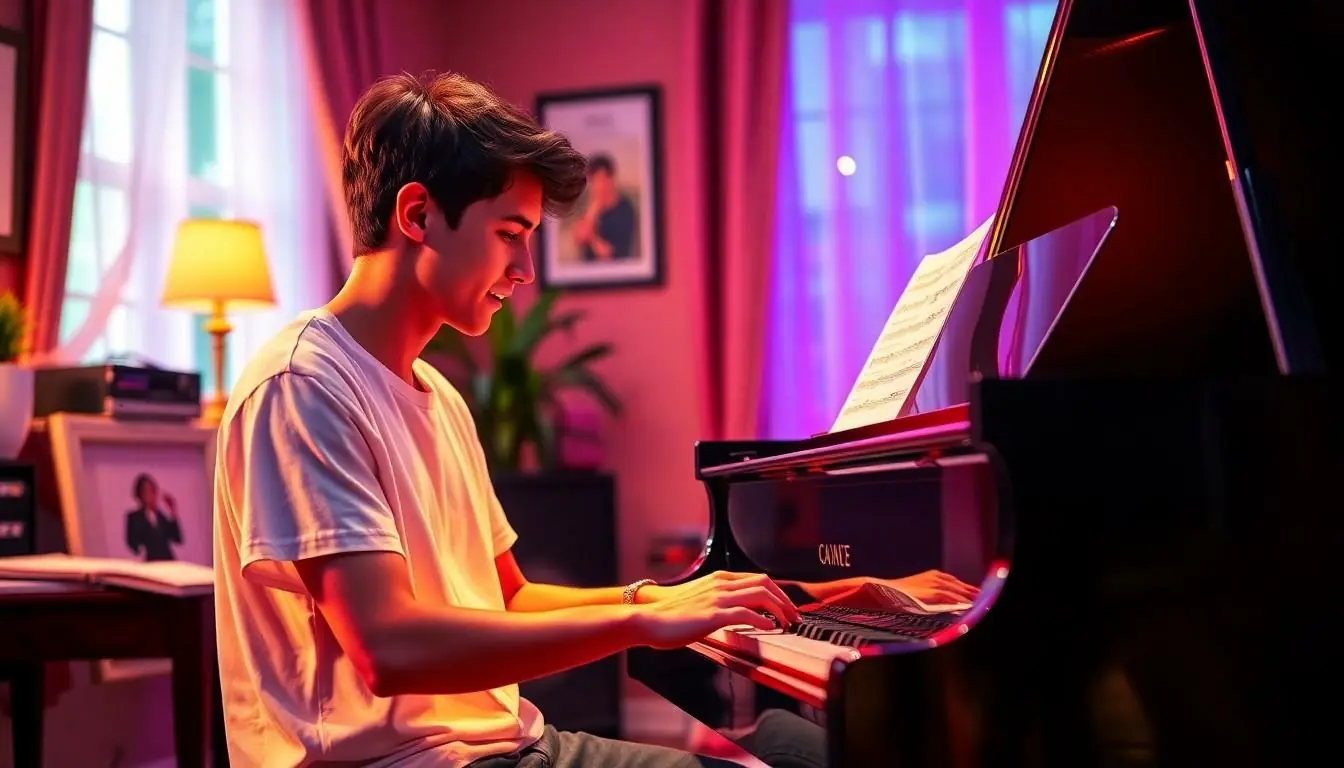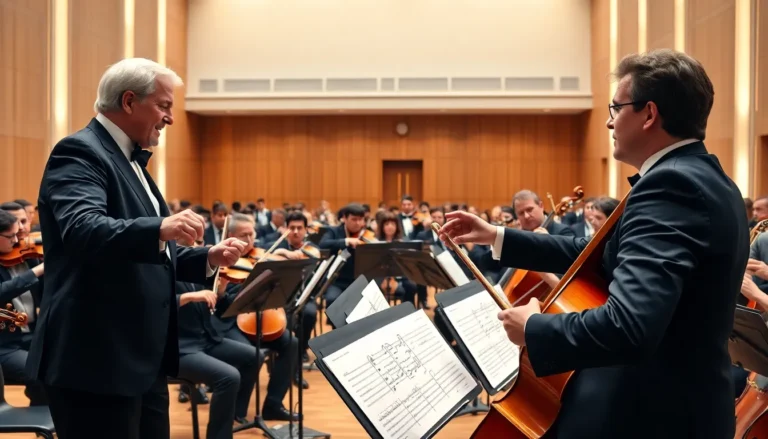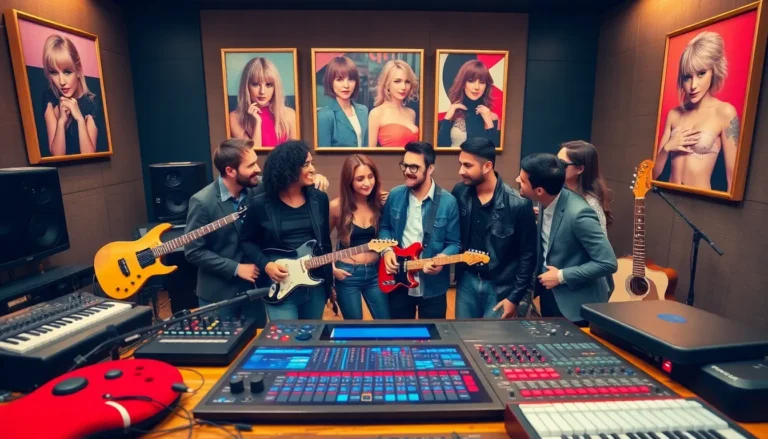Imagine a world where catchy melodies dance on the keys of a piano, wrapping around your ears like a warm hug. That’s the magic of piano pop music. It’s the genre that effortlessly blends the elegance of classical piano with the infectious energy of pop, creating tunes that make you want to sing along—preferably in the shower, where no one can judge your pitch.
From chart-topping hits to hidden gems, piano pop has a way of tugging at heartstrings while keeping toes tapping. Whether it’s the soaring ballads that make you feel all the feels or the upbeat anthems that brighten your day, this genre knows how to deliver. So, buckle up as we dive into the enchanting world of piano pop music, where every note tells a story and every chord strikes a chord.
Table of Contents
ToggleOverview of Piano Pop Music
Piano pop music showcases a unique combination of classical piano techniques and contemporary pop elements. This genre emphasizes melodic catchiness, with memorable hooks drawing listeners in. Heartfelt ballads often evoke deep emotions, while upbeat tracks encourage joy and celebration.
Artists across the globe embrace piano pop for its versatility. Many performers adapt their styles, resulting in various subgenres that include indie pop and mainstream hits. The genre’s appeal lies in its ability to connect with audiences through relatable lyrics and dynamic compositions.
Notable musicians exemplify the piano pop sound. Elton John, known for his powerful ballads and engaging stage presence, has garnered immense popularity. Alicia Keys combines soulful vocals with intricate piano arrangements, enriching the genre. Additionally, contemporary artists like Halsey and Charlie Puth further expand the style, making it relevant for new generations.
Instrumentation in piano pop varies significantly. The piano serves as the central instrument, but synthesizers and electronic beats often enhance production quality. Layering diverse sounds increases the richness of the music, creating a full, immersive listening experience.
Listeners appreciate piano pop not just for entertainment but also for its storytelling. Each composition often conveys personal experiences, making it relatable. Through the marriage of lyrical depth and musical sophistication, piano pop music thrives as a beloved genre in the contemporary music scene.
History of Piano Pop Music

Piano pop music has a rich history shaped by various influences and evolving trends. Artists and genres have transformed the landscape, making it a vibrant part of contemporary music.
Early Influences
Classical music served as a primary influence on early piano pop. Composers like Beethoven and Chopin emphasized melody and structure, setting a foundation for later musicians. Jazz also played a crucial role, with artists like Scott Joplin introducing syncopated rhythms and improvisation. These styles combined laid the groundwork for the emergence of pop music, allowing for experimentation. The 1950s saw the rise of rock and roll, further inspiring piano-driven tunes with catchy hooks. Musicians began to incorporate piano arrangements into their compositions, paving the way for future piano pop artists.
Evolution Through the Decades
The 1970s marked a significant evolution in piano pop, as artists like Elton John and Billy Joel brought piano-centric songs to mainstream audiences. These musicians blended pop with rock and glam, showcasing the piano as a lead instrument. In the 1980s and 1990s, the genre expanded further with singer-songwriters like Tori Amos and Ben Folds, who infused personal narratives into their music. The rise of technology in the 2000s introduced synthesizers and electronic beats, pushing the genre in new directions. Contemporary artists, such as Charlie Puth and Halsey, now explore diverse sounds while maintaining the core essence of piano pop, appealing to a broad audience.
Key Artists in Piano Pop Music
Piano pop music features a variety of influential artists who shape the genre’s sound and direction.
Contemporary Icons
Elton John stands among the most significant figures in piano pop. His extensive catalog includes timeless hits like “Your Song” and “Rocket Man.” Alicia Keys revolutionized the genre with her powerful vocals and intricate piano work, especially in songs like “Fallin’.” Additionally, Charlie Puth blends modern production techniques with classical piano elements, creating chart-topping tracks such as “See You Again.” Halsey’s emotive style and narrative-driven lyrics in songs like “Eastside” exemplify contemporary piano pop. These artists not only exemplify what piano pop represents but also inspire future generations.
Emerging Talents
Numerous emerging talents push the boundaries of piano pop. Gracie Abrams captures attention with her intimate storytelling and melodic prowess. Slander expands the genre by incorporating electronic elements into piano-driven ballads. Other notable names include Sasha Alex S and Anson Seabra, both offering fresh perspectives and unique sounds. Their contributions showcase the genre’s adaptability and continuous evolution. Emerging artists enrich piano pop with innovative ideas, ensuring the genre remains vibrant and engaging.
Characteristics of Piano Pop Music
Piano pop music features a distinctive blend of melody and emotion. Elements like structure and lyrics contribute significantly to its charm.
Melodic Structure
Melodic structure in piano pop prioritizes catchy hooks and memorable progressions. Chord progressions often draw from familiar patterns, enhancing their accessibility. Artists typically showcase their skills through intricate piano melodies complemented by subtle harmonies. Signature traits include the use of arpeggios and rhythmic variations, which add depth to the sound. Variability allows each artist to inject their unique style while maintaining the genre’s essence. The combination of pop sensibility and classical influences creates an engaging musical experience.
Lyric Themes
Lyric themes within piano pop often focus on personal experiences and emotional narratives. Artists regularly explore topics like love, heartbreak, and self-reflection, resonating deeply with listeners. Introspection prevails in many songs, inviting audiences into the artist’s emotional landscape. Stories often unfold in relatable ways, enhancing connection and empathy. Songwriters emphasize authenticity, ensuring that each lyric feels genuine and grounded. This lyrical depth combined with melodic appeal contributes to the enduring popularity of piano pop music.
The Impact of Technology on Piano Pop Music
Technology significantly shaped the landscape of piano pop music. Digital audio workstations transformed music production, allowing artists to experiment with sounds and styles. Producers utilize software like Ableton Live and Pro Tools to blend traditional piano elements with electronic beats.
Songwriters leverage social media platforms to connect with fans, fostering real-time feedback on their music. Platforms like TikTok and Instagram serve as launchpads for artists, enabling viral trends that can propel piano pop songs to mainstream success. The accessibility of technology democratizes music creation, allowing young talents to share their work widely.
The rise of music streaming platforms shifted how listeners consume piano pop music. Services such as Spotify and Apple Music created curated playlists that highlight piano-based tracks, increasing exposure for emerging artists. This accessibility means listeners can discover new favorites alongside classic hits from legends like Elton John and Alicia Keys.
Live performance technology evolved as well, enhancing audience experiences. Artists now incorporate visual elements during performances, using LED screens and interactive tools to engage concertgoers. These innovations allow performers to create immersive environments that complement the emotional weight of piano pop songs.
Collaboration tools, such as cloud-based platforms, facilitate remote songwriting sessions. Artists from different parts of the world can co-create in real-time, blending diverse influences into their music. This collaborative spirit leads to fresh, innovative sounds that keep piano pop vibrant and evolving.
Overall, technology enriches the piano pop genre while reinforcing its emotional storytelling. By integrating modern techniques into classic forms, artists craft a dynamic sound that resonates with a broad audience, ensuring the genre remains relevant in today’s music scene.
Piano pop music stands as a testament to the power of melody and storytelling. Its unique blend of classical influences and modern pop sensibilities creates a captivating soundscape that resonates with listeners of all ages. The genre’s ability to evoke emotions through relatable lyrics and catchy hooks ensures its enduring popularity.
As artists continue to innovate and push boundaries within piano pop, the genre remains vibrant and relevant. With technology enhancing production and distribution, new talents emerge alongside established icons, ensuring that the magic of piano pop will continue to enchant audiences for years to come. Embracing this genre means diving into a world where every note tells a story, making it a beloved choice for music lovers everywhere.



